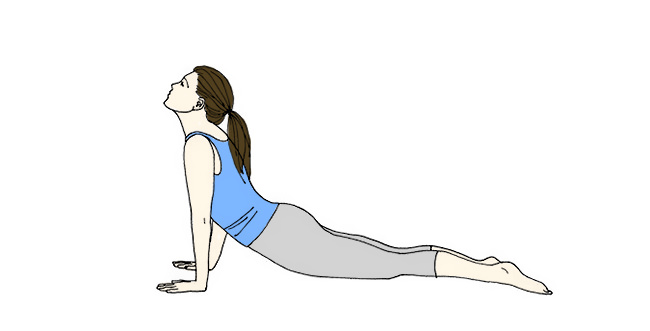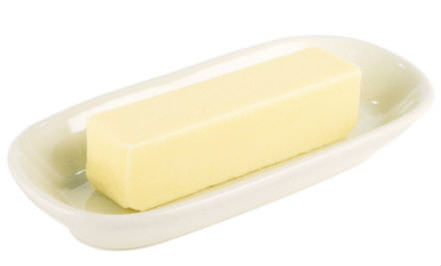14 July 2017
Summary: Losing at least 5% of your body weight has been shown to have a lasting effect on reducing blood triglyceride levels.
Summary: Minimizing added sugar in your diet from soda, juice and sweets can reduce blood triglyceride levels.
Summary: Following a low-carb diet can lead to a significant reduction in blood triglyceride levels, especially when compared to a low-fat diet.
Summary: Adding fiber to your diet from fruits, vegetables and whole grains can reduce blood triglycerides.
Summary: A regular workout regimen with high-intensity aerobic exercise can increase “good” HDL cholesterol and decrease blood triglycerides.
Summary: A diet high in trans fats can increase both blood triglycerides and the risk of heart disease. Limit your consumption of processed, baked and fried foods to minimize your trans fat intake.
Summary: Fatty fish is high in omega-3 fatty acids. Eating two servings per week can decrease the risk of heart disease and reduce triglyceride levels.
Summary: Monounsaturated and polyunsaturated fats can decrease blood triglyceride levels, especially when they are consumed in place of other fats.
Summary: While research is unclear on how meal frequency affects blood triglyceride levels, studies show that setting a regular meal pattern can decrease many heart disease risk factors and prevent insulin resistance.
Summary: Some studies suggest that limiting your alcohol intake can help lower blood triglyceride levels.
Summary: Soy contains compounds associated with several health benefits. Eating soy protein in place of animal protein can reduce blood triglycerides.
Summary: Nuts contain many heart-healthy nutrients, including fiber, omega-3 fatty acids and unsaturated fats. Studies suggest that including between 3–7 servings of tree nuts per week can decrease blood triglycerides.
Summary: Several supplements have been studied for their ability to lower triglyceride levels, including fish oil, fenugreek, garlic extract, guggul and curcumin.
13 July 2017
The Only 5 Easy Exercises You Need to Do Every Day!
Getting a little exercise every day is important for your health. Yet while there are various workouts you can do, what follows is perhaps the only exercise you need to do each day. Known as the Five Tibetan Rites, and also referred to as the Fountain of Youth, this practice strengthens and stretches all the main muscles in your body and will help you maintain your balance. Performing these rites daily will therefore keep you limber and strong, no matter how old you are. You can do the practice in just 10 minutes, ideally in the morning, as they will give you a boost of energy.
Getting Started: Begin by practicing five to seven repetitions of each rite and build up to 21 reps.
 Starting position: Stand with your arms outstretched and horizontal to the floor, keep your palms facing down and your arms in line with your shoulders. Keep your feet hip-width distance apart.
Exercise: Stand tall, drawing the crown of your head up toward the ceiling, then focus on a spot in front of you, so that you can count your rotations. Spin around clockwise until you become slightly dizzy. If you're feeling rather dizzy, interlace your fingers at your heart and stare at your thumbs. Be sure to have a chair nearby too, enabling you to hold onto and steady yourself. Start off with two rotations and gradually increase to 21.
Starting position: Stand with your arms outstretched and horizontal to the floor, keep your palms facing down and your arms in line with your shoulders. Keep your feet hip-width distance apart.
Exercise: Stand tall, drawing the crown of your head up toward the ceiling, then focus on a spot in front of you, so that you can count your rotations. Spin around clockwise until you become slightly dizzy. If you're feeling rather dizzy, interlace your fingers at your heart and stare at your thumbs. Be sure to have a chair nearby too, enabling you to hold onto and steady yourself. Start off with two rotations and gradually increase to 21.
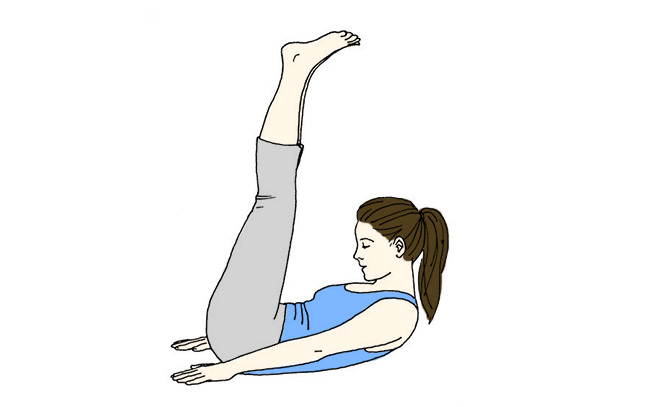 Starting position: Lie flat on the floor and fully extend your arms by your sides, with the palms of your hands face down on the floor. If you have lower back issues, place your fingers underneath your sacrum.
Exercise: Raise your head off the floor as you inhale and tuck your chin into your chest. At the same time lift your legs while keeping your knees straight in a vertical position. Extend your legs over your body toward your head. Slowly exhale and lower your legs and head to the floor, all while keeping your knees straight and your big toes together.
Starting position: Lie flat on the floor and fully extend your arms by your sides, with the palms of your hands face down on the floor. If you have lower back issues, place your fingers underneath your sacrum.
Exercise: Raise your head off the floor as you inhale and tuck your chin into your chest. At the same time lift your legs while keeping your knees straight in a vertical position. Extend your legs over your body toward your head. Slowly exhale and lower your legs and head to the floor, all while keeping your knees straight and your big toes together.
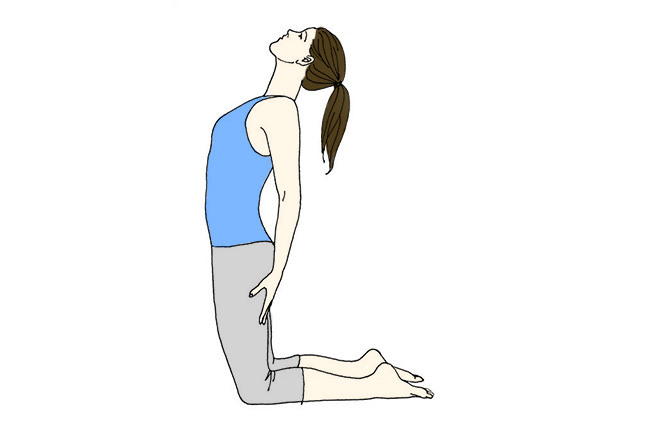 Starting position: Kneel on the floor, keep your toes curled under. Place your hands on the back of your thigh muscles and tuck your chin toward your chest.
Exercise: Slide your hands down the back of your thighs, drawing your shoulders back and your head up toward the sky. Your upper back should be arched more than your lower back. Move your head back as though you were drawing a line with your nose on the ceiling. Return to an upright position slowly and repeat.
Starting position: Kneel on the floor, keep your toes curled under. Place your hands on the back of your thigh muscles and tuck your chin toward your chest.
Exercise: Slide your hands down the back of your thighs, drawing your shoulders back and your head up toward the sky. Your upper back should be arched more than your lower back. Move your head back as though you were drawing a line with your nose on the ceiling. Return to an upright position slowly and repeat.
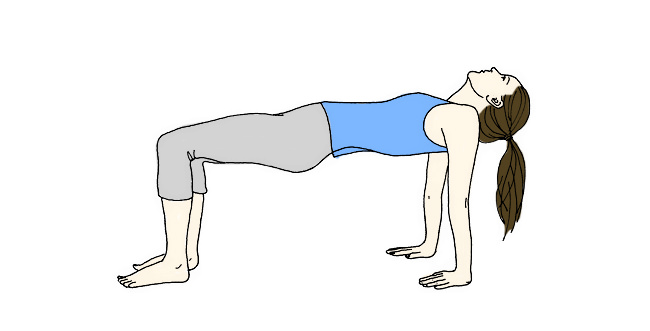 Starting position: sit down on the floor, keep your legs straight out in front of you and keep your feet about 30 centimeters apart. Keep your palms on the floor alongside your sit bones.
Exercise: As you gently drop your head back, raise your torso so that your knees bend while your arms remain straight. In this exercise, you are basically in table-top position. Slowly return to your starting position and rest for a few seconds before repeating the exercise.
Exercise: Press up into an upward-facing dog by curling your toes under and lifting your heart, drawing your shoulders back. Keep your arms straight and look straight ahead of you. If you are a little more flexible, you can draw your head back and look up and draw your hips up and back, extending your spine into downward-facing dog pose. Repeat, moving back and forth between downward and upward-facing dog.
Starting position: sit down on the floor, keep your legs straight out in front of you and keep your feet about 30 centimeters apart. Keep your palms on the floor alongside your sit bones.
Exercise: As you gently drop your head back, raise your torso so that your knees bend while your arms remain straight. In this exercise, you are basically in table-top position. Slowly return to your starting position and rest for a few seconds before repeating the exercise.
Exercise: Press up into an upward-facing dog by curling your toes under and lifting your heart, drawing your shoulders back. Keep your arms straight and look straight ahead of you. If you are a little more flexible, you can draw your head back and look up and draw your hips up and back, extending your spine into downward-facing dog pose. Repeat, moving back and forth between downward and upward-facing dog.
 Starting position: Stand with your arms outstretched and horizontal to the floor, keep your palms facing down and your arms in line with your shoulders. Keep your feet hip-width distance apart.
Starting position: Stand with your arms outstretched and horizontal to the floor, keep your palms facing down and your arms in line with your shoulders. Keep your feet hip-width distance apart. Starting position: Lie flat on the floor and fully extend your arms by your sides, with the palms of your hands face down on the floor. If you have lower back issues, place your fingers underneath your sacrum.
Starting position: Lie flat on the floor and fully extend your arms by your sides, with the palms of your hands face down on the floor. If you have lower back issues, place your fingers underneath your sacrum. Starting position: Kneel on the floor, keep your toes curled under. Place your hands on the back of your thigh muscles and tuck your chin toward your chest.
Starting position: Kneel on the floor, keep your toes curled under. Place your hands on the back of your thigh muscles and tuck your chin toward your chest. Starting position: sit down on the floor, keep your legs straight out in front of you and keep your feet about 30 centimeters apart. Keep your palms on the floor alongside your sit bones.
Starting position: sit down on the floor, keep your legs straight out in front of you and keep your feet about 30 centimeters apart. Keep your palms on the floor alongside your sit bones.
Exercise: As you gently drop your head back, raise your torso so that your knees bend while your arms remain straight. In this exercise, you are basically in table-top position. Slowly return to your starting position and rest for a few seconds before repeating the exercise.
Butter is an essential resouce found in every kitchen. It's a necessary ingredient in many recipes, it aids cooking, and it enhances the flavor of many of our favorite foods. However, there are some unusual benefits of butter that you are surely missing. Surprisingly, butter is a brilliant solution to many of our household, food, and daily problems. Read this post to find out what else you can do with this multi-purpose dairy product.
Household Applications of Butter
Have a noisy door in your house that is really getting on your nerves? Butter's got this covered, literally. Open a stick of butter and rub it onto the hinges of your creaky door, and say goodbye to the irritating sound.
We often stain plastic objects, then attempt to remove the stains by rubbing them with water and soap. That's the hard way. The easiest solution to this is found in your fridge. Grab some butter, rub it generously onto the ink-stained plastic, and let it soak. After 20-40 minutes, wipe off the butter and there you go - your plastic looks like new.
The tangling of necklaces happens very easily, usually at the worst time, when your patience levels aren't sky-high. It seems like the more you try to untangle it, the worse it becomes. Instead of letting it get to you, remember our friend the butter. Rub a small quantity of butter onto the entwined area and using a fork, work out the entanglement.
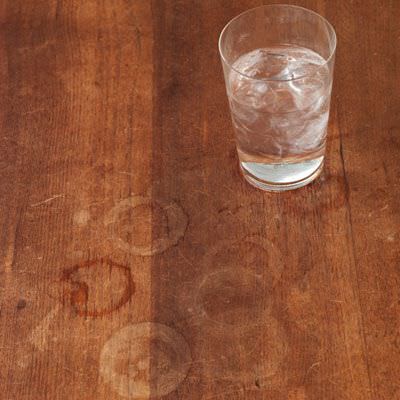 4. Get Rid of Watermarks from Wood
4. Get Rid of Watermarks from WoodIf you have stained your wooden furniture with condensation rings and don't know how to remove them - take this advice. Apply about a tablespoon of butter to the watermark, rub into the wood and leave it over-night. Wipe it off the following morning and you will see how the butter was able to replace the wood's lost moisture.
5. Slice Through Sticky Foods Easily
Isn't it annoying when you're cutting through a thick chocolate cake and by the time you get to the third pass your knife is full of sticky scraps? Next time you're slicing such food, remember to coat your knife with butter before you start. Just like that you'll avoid messiness and your knife will slice though food smoothly, making your slices nice and neat.
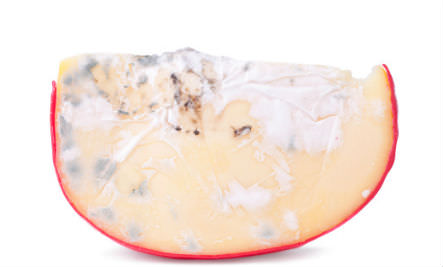
Like many other foods, cheese is difficult to keep from molding, especially in hot weather. No matter if you store it in cold temperature or not, mold will still find its way to your storage and grow on your vulnerable cheese. Prevent this from happening by covering the exposed portions of your cheese with butter, and it will form a protective seal that will keep it from getting moldy.
7. Preserve Semi-Used Onions
It's not the first time we've used a portion of onion then stored the rest of it for later use, only to find that after a few days it has become shriveled and is no longer good for use. Next time you store a partially-used onion, simply spread a bit of butter onto its moist surface and store it in foil. This will prolong the freshness of your onion for quite some time.
Body and Health Remedies Using Butter8. Aid in Swallowing Pills
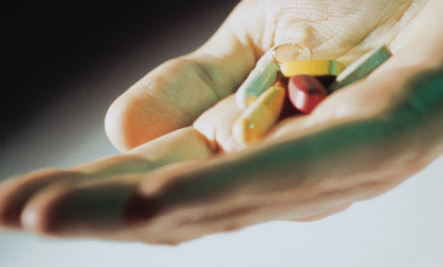
If you often find it hard to swallow sizeable pills and capsules, make your life easier by coating them with a little butter and then swallowing them with a gulp of water. This will be enough for them to easily slide down your throat.
Suffering from dry nails that turn weak and brittle is a common occurrence, especially when exposed to moist conditions. Surprisingly, butter can treat the problem easily. Before you go to sleep, find a stick of butter, rub it onto each cuticle, leaving a little dab, and put on a pair of cotton gloves. Leave your nails to soak the proteins from the butter overnight and it will help them regain their strength, as well as prevent them from cracking in the future.
10. Soften Your Hands
We've all suffered from dry and rough skin on our hands, especially in the cold season. Butter contains plenty of proteins and fats which can act as a natural moisturizer, so you can find a quick supply of that in your own kitchen. Apply some butter to your hands and rub it in, the same way you do with a regular moisturizer.
11. Nourish Your Hair
If you suffer from dry hair and are finding conditioners useless, you may want to try a more natural alternative to having healthy, moisturized hair. Although it sounds unusual, my advice would be to saturate your hair with a little butter. Its natural properties will help tame the frizz, while giving your hair some healthy shine and smoothness.











